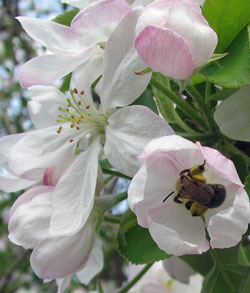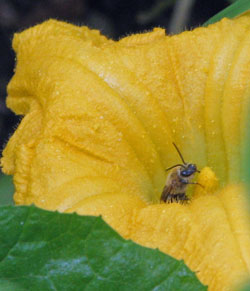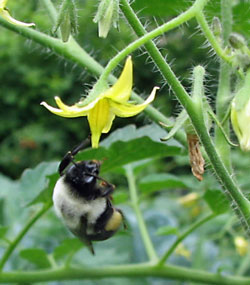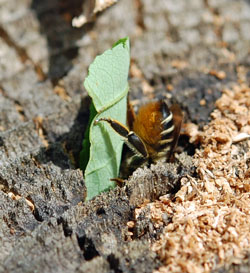Pollinators are essential
 ©Janet AllenNo bees, no apples!
©Janet AllenNo bees, no apples! We'd have a pretty small harvest without the help of pollinators!
We were surprised to learn that it takes more than one visit to completely pollinate fruits and vegetables. Why are some apples lopsided? Not all the seeds in the carpals )(where the seeds are in the center of the apple) were pollinated and that side of the apple didn't develop.
 ©Janet AllenA bee pollinating our squash
©Janet AllenA bee pollinating our squash Squash plants have male and female flowers. (The squash develops from the female flowers.)
The bees do the work of pollinating the flowers so the squash develops. No bees, no squash!
 ©Janet AllenBumblebee pollinating a tomato
©Janet AllenBumblebee pollinating a tomato Although wind can do the job, tomatoes benefit greatly from bumblebees' special "buzz pollination."
Some gardening experts recommend tapping each flower cluster a couple of times a day with a pencil, but we'd much rather provide an appealing habitat for bumblebees and let them do the work—as nature intended.
 ©Janet Allen Nesting for bees
©Janet Allen Nesting for beesThe problem: Pollinators are in trouble. Although honeybees' problems have gotten a lot of publicity, native bees are in trouble, too.
We try to provide as much habitat as possible for our bees.
Check out the ways we provide habitat for bees and other pollinators in Our Habitat Garden. Our habitat garden not only is a wonderful place to be, but it helps make our edible garden much more productive.
